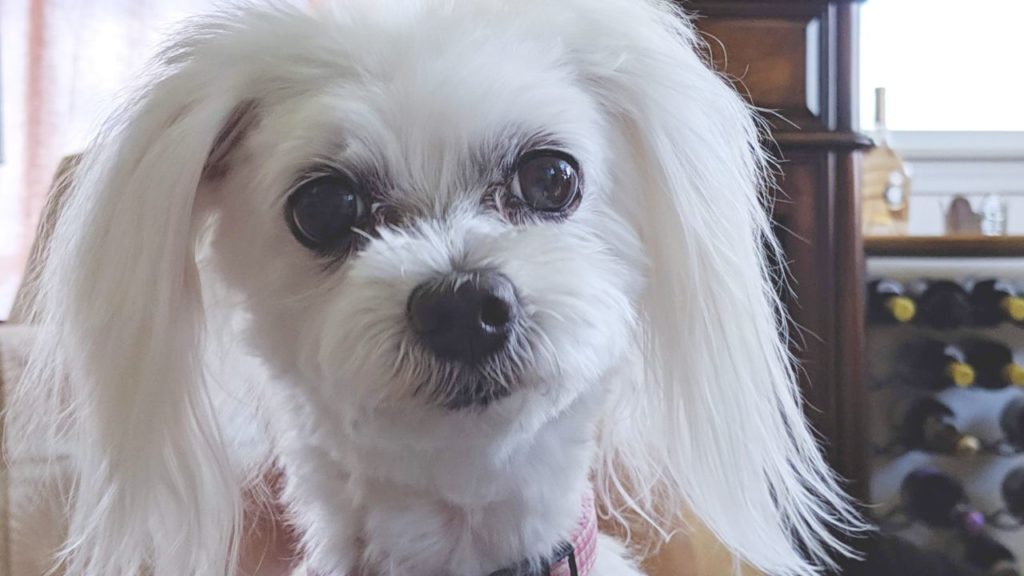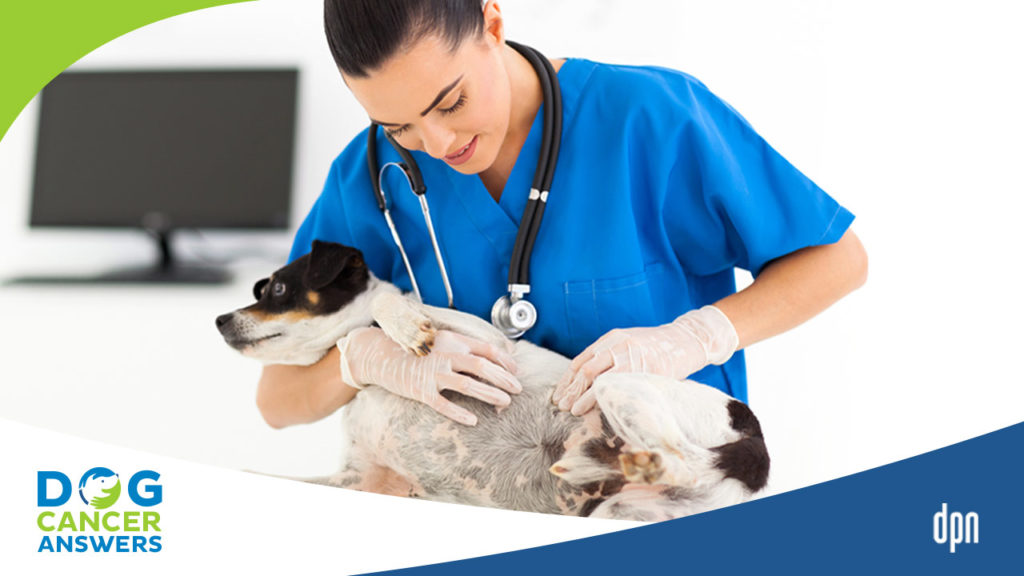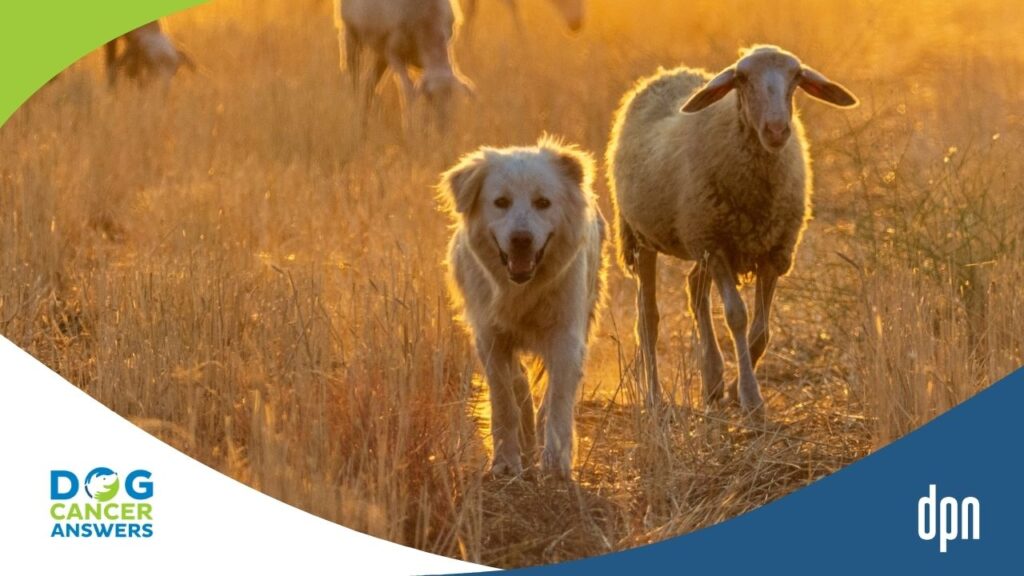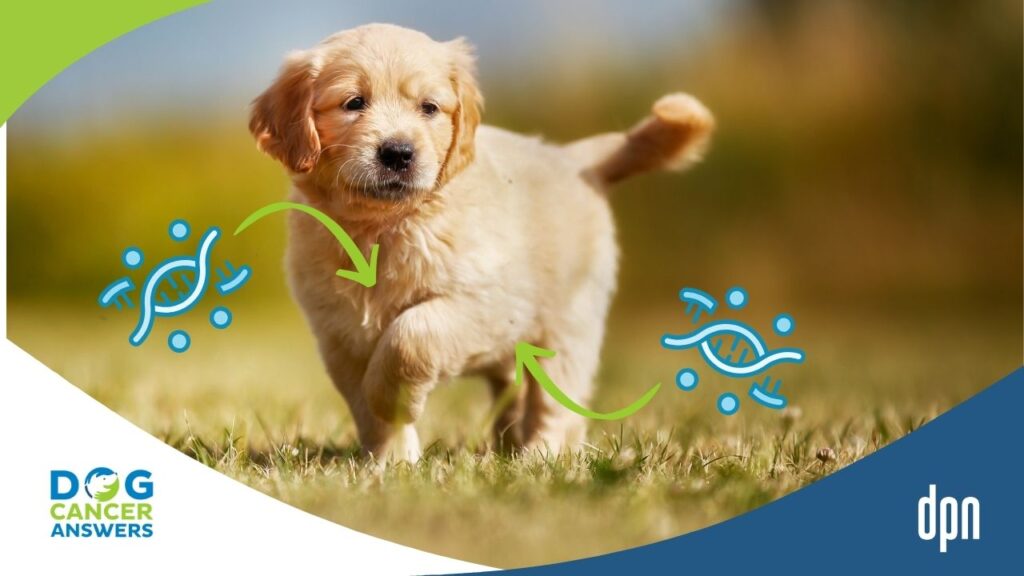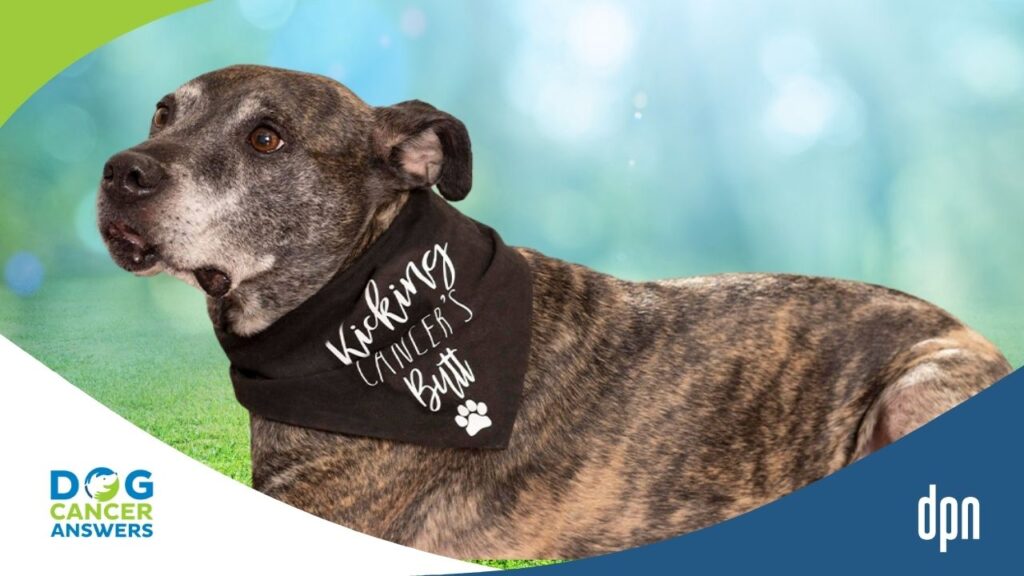EPISODE 173 | RELEASED June 27, 2022
The Role of Vet Techs in Oncology | Jenny Fisher
Not sure what a vet tech does at the oncologist office? Listen in for the scoop, plus the story of a patient who changed one tech’s life.
SHOW NOTES
When your dog has cancer, there are a lot more people on her care team than just you and the oncologist. Veterinary technicians – including ones who specialize in oncology – are another layer of medical professionals ready to help your dog.
Jenny Fisher, Registered Veterinary Technician and Veterinary Technician Specialist in Oncology, was the Head Technician in Oncology at Louisiana State for 14 years. Fisher explains what vet techs do in the hospital, the education they have undergone, and the struggles of working in this profession. She also explains why vet techs aren’t called veterinary nurses in the US, and untangles some of the different credentials used in various states.
Links Mentioned in Today’s Show:
Academy of Internal Medicine for Veterinary Technicians
National Association of Veterinary Technicians in America
American Association of Veterinary State Boards
Related Links:
Cancer Treatment Unit at Louisiana State University
How to Meditate With Your Dog (the Maui the dog story)
[00:00:00] >> Jenny Fisher RVT: And the owner looked at him and said, "This dog lives to catch a Frisbee. So if he’s never gonna catch a Frisbee again, we should just stop now." And of course I’m going, he’s not gonna catch a, you know, he’s on a ventilator. And Dr. Mauldin said, "Give us a week."
[00:00:16] >> Announcer: Welcome to Dog Cancer Answers, where we help you help your dog with cancer.
[00:00:23] >> Molly Jacobson: Hello friend. We think of veterinary oncologists as being the key players in our dog’s cancer treatments, and of course they are, but there are other people on our dog cancer care teams that are really, really vital and actually do a lot of the work. Those are veterinary technicians. They’re licensed or registered or certified depending on the state that you live in.
And they do all sorts of things from blood draws, to anesthesia, to running radiation machines. And they are very skilled, highly educated and important members of the team. In human medicine, we would probably call them nurses. To talk to us today about what it’s like to be a vet tech and what you should expect from your vet tech is Jenny Fisher.
She is a registered veterinary technician and she’s also a veterinary tech specialist in oncology. There’s only a few of them and, uh, there should be a lot more. And I think you’ll see why as we get into this little longer conversation with Jenny Fisher – why these very, very powerful people are so important to our dog’s wellbeing and care, especially while they’re receiving cancer treatments.
Jenny Fisher. Thanks for joining us today.
[00:01:44] >> Jenny Fisher RVT: Hi, how are you?
[00:01:45] >> Molly Jacobson: I’m very well. How are you?
[00:01:48] >> Jenny Fisher RVT: I’m doing good. Thanks. It’s already getting hot down here. So I’m missing a little bit of cooler weather, but such is to be expected.
[00:01:55] >> Molly Jacobson: Yes. That’s what happens in your neck of the woods, isn’t it?
[00:01:58] >> Jenny Fisher RVT: Absolutely.
[00:02:00] >> Molly Jacobson: So tell me about the letters behind your name, ’cause you have a string of letters behind your name.
[00:02:04] >> Jenny Fisher RVT: I am an RVT, so registered veterinary technician. And then I am a veterinary technician specialist in the area of oncology. So that’s being a registered technician and then an additional education process, experience process. You have to go through kind of like a, a vet tech residency program per se.
And then you go through an application process, that application has to be accepted, and then you are allowed to sit the national exam. Currently, I think there’s about 35 or 40 of us in the country. So we’re growing, small but mighty.
[00:02:41] >> Molly Jacobson: That’s small though. That sounds very small to me.
[00:02:44] >> Jenny Fisher RVT: It is, it is, you know, um, the the specialties within our academy, um, the total members, including oncology, internal medicine, large animal, and a couple of others is about 300, so bigger, a little bit, but certainly our smaller academies like neurology and oncology are a little bit smaller.
[00:03:04] >> Molly Jacobson: Yeah. So one of the things I wanted to talk to you about, ’cause we really wanted to talk today about how the, all of the different people who are in a veterinary practice work together to help a dog who comes in for cancer treatments. And I know there’s a lot of different levels of experience and training and an RVT – and a LVT in some states, licensed veterinary technicians – are all people who’ve gone through a training program and been certified. Am I correct in that?
[00:03:33] >> Jenny Fisher RVT: That is correct. And I’m so glad that you are bringing that up because certainly as a profession, we need to talk about things like, you know, having some title protection and really educating the public on the other credentialed professions within the veterinary field. So thank you for doing this.
[00:03:50] >> Molly Jacobson: Yeah, absolutely. I think a lot of times, as, just as listeners of this show, I know as a lay person, I bring my dog into the vet, somebody takes them, somebody does something. And I don’t know who’s in the back and who has what credentials, and that’s state to state too, right? It might vary depending on where you live.
[00:04:10] >> Jenny Fisher RVT: Absolutely. So the, uh, state practice acts can vary between state to state, which is also very frustrating because you may have some legal skills that you’re allowed to do in some state, but say you move, and that might not be the same thing. So it is different based state to state.
And from the point that you walk into the door at your veterinary hospital, there are specific jobs that each one of the members have, and without every single one of those positions, those hospitals could not run the way that they do. So it’s, you know, I think so many times we focus on the veterinarians or even the technicians, but the veterinary assistants, the customer support staff, the managers of the hospital, all of those support services are truly – and the kennel staff, oh my goodness. They truly support the heart of the hospital.
[00:05:02] >> Molly Jacobson: So the practice manager, that seems pretty straightforward. That’s a person who’s more on the business side of things, making sure that everything’s running smoothly from a business perspective.
[00:05:13] >> Jenny Fisher RVT: Correct.
[00:05:13] >> Molly Jacobson: But I’m interested in the difference between assistants, techs, you mentioned kennel, um, assistants?
[00:05:20] >> Jenny Fisher RVT: Yeah.
So, you know, our customer support representatives that sit at the front, which are our first line, right. They know everything. Uh, and then our veterinary assistants, the way that those are separated, is a true veterinary technician has a license to practice.
So that means that they’ve graduated from an AVMA accredited program as well as passed a national exam. So they also have a medical license within that hospital. They also have a higher level of education when it comes to specific pathology, physiology, safety even, so a much more specific type education.
Now, I have worked with some of the best veterinary assistants that have been called and we’ve called veterinary technicians through the years that have learned what they do on the job and the hospital cannot run without them, but technically their official term would be a veterinary assistant in those states that do have that title protection.
And, and as you mentioned, that title varies from state to state as well. So, you know, I live in Louisiana now. I’m an RVT here. 20 years ago, I lived in Florida. I was a CVT there. There are other states where it’s LVT. So all three of them, and there’s a fourth one, LVMT, I believe it is.
[00:06:41] >> Molly Jacobson: Okay.
[00:06:41] >> Jenny Fisher RVT: That are all the same education and the same requirements, but they’re called different things. So no wonder that everybody’s confused because so are we sometimes, you know. And there is no reciprocity, so you can’t take your license from one state to the other.
[00:06:58] >> Molly Jacobson: Okay.
[00:06:59] >> Jenny Fisher RVT: Right. So, uh, it’s just not easy to do.
[00:07:02] >> Molly Jacobson: Right. And then the veterinary assistant may have tons of experience, but they don’t have that extra level of training and that certification from-
[00:07:10] >> Jenny Fisher RVT: 100%.
[00:07:11] >> Molly Jacobson: Okay. All right. So another question I had. Is a nurse, sometimes I hear veterinary nurse, is that kind of like the same as assistant because there’s no letters after their name or is that just another word?
[00:07:24] >> Jenny Fisher RVT: Ha, I’m so glad you brought this up. Uh, so the word "nurse," um, there has been, through NAVTA, so the National Veterinary Technician Association, there has been a movement to change the protected title and to unify that title throughout the country in every state under the term nurse.
The problem there is, is that nurse is a protected title within the human profession. So those human nurses have that, that title protection. And so there is a, a big push and pull, and some people are very strongly feeling one way, that nurse better encompasses – you know, for me, I don’t really care what I’m called. I would just like the title protection and for people to be educated on that, that one title.
[00:08:13] >> Molly Jacobson: When we go to a doctor’s office, we know that a nurse has a certain level of training and has a medical license.
[00:08:17] >> Jenny Fisher RVT: Absolutely. And that’s why they have titleship of that word, right? Because that’s what the public knows. And so as much as we know what we do is just as important, we do a lot of the same skills, a lot of the same diagnostic tests, but it is seen in a, in a different way, right? Because we’re within the veterinary profession. And they’ve worked to protect that title and they, they deserve it. Right? We couldn’t live without our nurses.
So there’s been a lot of push for it, but I think that the American Nurses Association has really kind of stood firm and said that’s not gonna happen. So, you know, hopefully we can shift gears and, and maybe, you know, just really work on educating the public that there is a difference between a veterinary technician, there are multiple titles, and a veterinary assistant is not a credentialed or licensed to practice person within the hospital. Does not mean they are not vital, and we need them, we need so many of them, but that is the legal difference there.
[00:09:19] >> Molly Jacobson: Right. And then in terms of a practical, every day, I’m taking my pet to the vet, the person who has a string of letters behind their name, whatever they may be in the state that I’m in, that person has been specifically trained and has a medical license that lets them do certain things. So like, what are the kinds of things that you, as an RVT, can do or say to a client as opposed to an assistant or even a veterinarian? What does it really mean?
[00:09:50] >> Jenny Fisher RVT: So as a veterinary technician, there are really a couple of things that we cannot do. We cannot perform surgery.
[00:09:56] >> Molly Jacobson: Okay.
[00:09:56] >> Jenny Fisher RVT: We cannot diagnose, so we cannot diagnose a medical condition, and we cannot prescribe medications. The majority of the technical skills that are performed are all allowed either under direct or indirect supervision of the veterinarian. So things like blood draws, uh, cystocentesis, collecting urine with a needle through the abdomen, guided by the ultrasound or not.
Performing radiographs and x-rays. Assisting in surgery, performing anesthesia. The majority of credentialed veterinary technicians is where they spend a lot of their time are anesthetizing the pets that come in while the doctor or surgeon performs the surgery. So, you know, a lot of times that’s, that’s not the DVM running that anesthesia, and that credentialed veterinary technician is well within their scope of practice as long as it is in their, their Practice Act, that that is within their capabilities. Um, and we do it very well.
[00:10:56] >> Molly Jacobson: Oh, well obviously. I mean, most dogs do well with surgery in general.
[00:10:59] >> Jenny Fisher RVT: Absolutely.
[00:11:00] >> Molly Jacobson: Right.
[00:11:00] >> Jenny Fisher RVT: Absolutely.
[00:11:01] >> Molly Jacobson: They come back to you and that’s what you want.
[00:11:03] >> Jenny Fisher RVT: Well, that’s the goal. 100%. Yeah.
[00:11:06] >> Molly Jacobson: Right. So it’s a really important role in the hospital.
[00:11:10] >> Jenny Fisher RVT: Yes, it is.
[00:11:11] >> Molly Jacobson: I have wondered about why there are so few VTS oncology techs. Why are there only 35 of you at this time?
[00:11:22] >> Jenny Fisher RVT: Right, right. When I got mine in 2015, I was number, lucky number 13.
[00:11:27] >> Molly Jacobson: Really?
[00:11:28] >> Jenny Fisher RVT: Yeah. So, so it has grown, but certainly not as much as we would like to. And you know, when I came into cancer medicine, it was not something I was, felt like I was born to do, driven to do. I honestly took a, a job at the university at the veterinary school in the cancer treatment center there as their head oncology technician – well as an oncology technician and then, and then moved up to their head oncology technician.
But I did it because it was great pay and great benefits as a technician, right? And within my first week of work, I met a patient who changed my life.
[00:12:02] >> Molly Jacobson: Really?
[00:12:02] >> Jenny Fisher RVT: Yes, absolutely. Um, and I lecture about him. He’s in every, and I’m getting goosebumps, every time I talk about him. Um, but he changed my perception. He changed my thought. He changed my life. He changed how I practiced as a veterinary technician and he changed how I live as a person.
[00:12:19] >> Molly Jacobson: Oh, well then you have to tell us the story.
[00:12:21] >> Jenny Fisher RVT: Absolutely. Um, this is so, so his name was Bear. He was a chocolate Labrador. He was fantastic. And I met him within my first week of work as he presented to the emergency service. And he was having seizures that were not controlled with anti-seizure medication. Uh, and so he was anesthetized through our emergency service and our anesthesia service and taken to CT scan where they found an intranasal mass. So a mass that was growing in the nasal cavity up into his brain, up through his cribriform plate and into his brain, right. So that was what was the source of the seizures, right, causing the seizures. So at the university, we had the ability to take him directly to surgery, collect a sample, take it directly to our clinical pathology department, and we got a diagnosis of a mast cell tumor, an intranasal mast cell tumor. Mast cell tumors are skin tumors.
We’re not supposed to see them within the nasal cavity, right? So-
[00:13:17] >> Molly Jacobson: Right.
[00:13:17] >> Jenny Fisher RVT: And I didn’t know that at the time, right? I was a baby oncology technician within my first week. And so I was following-
[00:13:23] >> Molly Jacobson: That’s odd.
[00:13:24] >> Jenny Fisher RVT: It, it was it’s, it was really strange. And I was following my, my faculty, my mentor at the time, who was a double boarded radiation and medical oncologist.
And he was taking me everywhere and he knew I was absolutely terrified. And so, as we were in the clinical pathology lab, we hear an overhead call, oncology to ICU stat. And if you’ve ever been in a hospital, that stat call is, is something has arrested, either respiratory or cardiac arrested. Uh, and we get into the ICU and he has arrested, respiratory arrest, and was placed on a ventilator. And, uh, it was heartbreaking. Uh, it was absolutely shattering.
As a baby technician who had been in general practice through school and all of my, my under career, to see this whole new life of medicine, the ability, the capability to even put a pet on the ventilator was just mind blowing to me.
My boss took me into the room with the owner, who was like six feet tall. I’m very short. Very tall guy. And he was sitting with his head down looking at the floor and my boss, you know, said, come on, you’re coming to talk in the room with me. So I literally tried to melt into the wall as much as possible. And Dr. Mauldin says, this is what we have. We have an intranasal tumor. His only shot is emergency radiation for his brain and for that nasal tumor.
And, you know, I’m standing over in the corner going, oh my gosh, he’s on a ventilator, you know, ugh, right? And the owner looked at him and said, "This dog lives to catch a Frisbee."
[00:14:51] >> Molly Jacobson: Aww.
[00:14:52] >> Jenny Fisher RVT: "So if he’s never gonna catch a Frisbee again, we should just stop now."
[00:14:55] >> Molly Jacobson: Oh my gosh.
[00:14:56] >> Jenny Fisher RVT: And of course I’m going, he’s not gonna catch a, you know, he’s on a ventilator. Uh, and Dr. Mauldin said, "Give us a week. Um, and if we’re not catching a Frisbee or on our way to catch a Frisbee, we’ll stop, but just give us a week."
So we stayed, stayed late. We stayed, did the emergency radiation, a larger dose at night. He went into the ICU. I went home, cried myself to sleep, didn’t eat, thought, oh my gosh, what have I done, have I taken the worst job in the world? And I come in the next morning, and in the ICU at the time where the ventilator cases were kept, you could see through the window as you walked.
And as I’m walking up, I could see that the ventilator table was open. So I immediately, oh, he passed away during the night, I knew it, I knew it. You know, I go into the doorway with just this, ugh. And I walk into the door and I hear laughter and giggling over around the side where our large breed dogs would go.
And as I turned the corner, I see Bear alive, not on a ventilator. Very very wobbly and having to be supported, but he’s not only alive, he’s off the ventilator and he is standing on his own four legs. I collapsed, literally fell to my knees, um, and sobbed like a baby. And he went on to finish his radiation and compete in Frisbee again, and win. On his last day of radiation, I was able to see him catch a Frisbee in the front yard. He actually lived four years-
[00:16:28] >> Molly Jacobson: Oh my goodness.
[00:16:29] >> Jenny Fisher RVT: -past that day.
[00:16:31] >> Molly Jacobson: Wow.
[00:16:32] >> Jenny Fisher RVT: So he, um, he’s in all of my lectures where I talk about oncology and the impact, and he, he changed me. I realized the perception that I had gone in, because I was uneducated, right?
And so that, that whole, how fear takes over when you, when you don’t know what’s possible or you don’t know what can be done. And it gave me this incredible sense of hope that’s never left me. At any time I have, uh, a rough day or certainly in the profession, you know, I think about that. It also, as a technician, really grounded me in remembering that my client’s choice is there for me to support.
I may not have done the same thing, or what choice might not have been right for me and my family, doesn’t mean it’s not right for them. Right? And so support and no judgment on some of those situations.
[00:17:27] >> Molly Jacobson: That is a really, really interesting topic you’re bringing up because I know for certain that many dog lovers feel that their veterinarian, the staff, the vet techs are judging them.
[00:17:41] >> Jenny Fisher RVT: 100%.
[00:17:43] >> Molly Jacobson: Are you trained specifically as a vet tech to not judge, to keep these things in mind? Or is that something that comes with experience, or some combination of the two?
[00:17:52] >> Jenny Fisher RVT: Unfortunately that’s not in the AVMA curriculum that I’m aware of, I didn’t learn it in school. And it’s a huge portion of, of what we do. And I have some lectures on it that I have brought through my experience and what’s been impacted on me. And I certainly think that with some experience you gain some additional appreciation for that. But the problem is, is veterinary medicine, the average technician is in the industry for five years. And then they leave.
[00:18:18] >> Molly Jacobson: Why is that?
[00:18:20] >> Jenny Fisher RVT: Oh, pay. Um, that, that, uh, no job protection, no title protection, no reciprocity. So if you have a partner and you have a veterinary technician license and they get another job in another state that they’re the financial, you know, breadwinner in that situation, or whatever your life presents, you can’t take your license and just go to work, right?
You know, and, and so many veterinary hospitals don’t even offer their veterinary technicians health insurance.
[00:18:47] >> Molly Jacobson: Uh-huh.
[00:18:48] >> Jenny Fisher RVT: So, I mean, there’s all of these different things. What do they stay for, right? It’s a physically demanding job. It’s a mentally demanding job. The pay is a lot of times minimum wage. Right? Certainly if they’re not credentialed, a veterinary assistant is probably making somewhere in the area of minimum wage.
[00:19:06] >> Molly Jacobson: Wow.
[00:19:07] >> Jenny Fisher RVT: And it’s just not sustainable. So they get out and they go back to school or they go do other things. And a lot of them don’t go back to veterinary technician school, unfortunately, they go to human nursing school.
[00:19:18] >> Molly Jacobson: Really?
[00:19:18] >> Jenny Fisher RVT: Because they wanna take that knowledge and that draw for that help and that, that nursing aspect, that, those nursing skills. But they don’t think that they can make a living in the clinic on that wage as a veterinary technician.
[00:19:33] >> Molly Jacobson: Wow. So what are some of the physical demands and the emotional demands that you mentioned that are, that are tough on techs?
[00:19:41] >> Jenny Fisher RVT: The physical demands, obviously large breed dogs – even smaller animals, right? You can get bit. You can get seriously hurt. As well as chronic radiation exposure. If you’re working with chemotherapy, there’s chronic hazardous drug exposure, right? All these different kinds of safety aspects, not just on your physical body, the mental body where we do see a lot of loss. You know, in the human profession, humane euthanasia is, is not, um, a thing in the States. I’m not sure, but it, it’s certainly not widely recognized here in the States.
[00:20:14] >> Molly Jacobson: Right.
[00:20:15] >> Jenny Fisher RVT: And within the veterinary profession, that is something that we readily have available and we readily do to ease suffering. So we see a whole different side of that. And I think that’s also a judgment space, right? When an owner can’t do that, and the staff is, oh, I don’t see how they can’t do that. They don’t know euthanasia like we do. They don’t know the peace that it can bring for the physical body, right?
[00:20:40] >> Molly Jacobson: So you’re saying that the staff might think that somebody should euthanize earlier than they’re choosing to.
[00:20:47] >> Jenny Fisher RVT: Correct.
[00:20:48] >> Molly Jacobson: That might be a judgment they’re passing.
[00:20:50] >> Jenny Fisher RVT: Correct. It is certainly something that I think has happened. And that we all need to work on. And that whole just supporting the pet parent, and what the pet parent chooses, it is what we support. And what we do our best at our job is to take care of that patient, support our physicians, and that doesn’t include judgment.
[00:21:09] >> Molly Jacobson: Right.
And that takes an emotional toll in and of itself because we can take a non-judgmental stance, but that often means that a judgment, because I’m a human person, a judgment arises and then I have to say, nope, that’s not part of this conversation, and I’m going to set that aside and I’m not gonna think it. And that’s emotional labor right there that you’re doing on behalf of everybody else in the room, but nobody else necessarily sees it.
[00:21:34] >> Jenny Fisher RVT: Absolutely. You know, also, you know, with just with the amount of loss as well, you kind of have that trauma, um, that you’re experienced to, and then you relive that trauma, right? Every time you have to go through that. So it’s a very emotionally taxing profession for sure.
[00:21:52] >> Molly Jacobson: And then it’s underpaid and the, the physical demands are, I can imagine, yeah, you have a hundred pound dog that’s having trouble walking or you have to flip them over.
[00:22:01] >> Jenny Fisher RVT: Right.
[00:22:01] >> Molly Jacobson: That’s a lot of weight.
[00:22:02] >> Jenny Fisher RVT: Absolutely. Or if you have to do a lameness exam or you have a patient that’s down, that’s tetraparetic or paraparetic and they, they can’t move their limbs, but they have to get up and go urinate or go, you know, that’s physically lifting and physically, you know. And it’s predominantly a female dominated profession, um, as far as veterinary technicians, we want to see more guys in our profession. But a lot of times, the chronic exposure to some of the other hazards like chronic radiation or hazardous drugs – and it’s not just chemo that are hazardous drugs within the veterinary practice, there’s lots of other drugs that they handle, um – that those impacts, although they may not be seen immediately, that may be something that when they’re out of the profession at 40 or 45, are experiencing those fertility problems or experiencing nodules or masses in their thyroid glands.
So, even though a lot of that concern and danger is immediate, like the lifting and dogs, some of it they’re not gonna see, potentially, the effects of that until 20, 30 years down the road.
[00:23:09] >> Molly Jacobson: Do we have any statistics on what kinds of exposure tend to show up later in health conditions in humans who worked in the veterinary field?
[00:23:17] >> Jenny Fisher RVT: So we don’t have that data on the veterinary components specifically, but we mimic the human data um, because the jobs and the drugs are exactly the same.
[00:23:27] >> Molly Jacobson: Right.
[00:23:27] >> Jenny Fisher RVT: So we can anticipate that we’re going to see the same type of results. Uh, and there is absolutely, uh, reported leukemias, blood cell cancers, lymphoma, reported from chronic handling. Chronic miscarriages, fertility issues, all of those things that can be long-term effects of human healthcare workers that are handling or doing those same tasks.
[00:23:52] >> Molly Jacobson: So when we are sitting in the waiting room and our dog’s in the back, and that person comes out with our dog and says he did great, she did fine, she’s a little woozy, there’s a ton of things that have happened in that person’s life in the past half hour, two hours, four hours, that we have no idea.
[00:24:14] >> Jenny Fisher RVT: 100%. And you may not know that there is two pet parents saying goodbye in two exam rooms that they’re working with. You may not know that a patient who they’ve been working with for a week just crashed in the back and they’re having to call those pet parents and say goodbye to this pet that they’ve been taking care of for a week.
So all of that compilation, right, and adding and adding and adding, really makes it, you know, not worth staying for a lot of people. Certainly if they’re not going to be paid well enough to live and feed their families.
[00:24:45] >> Molly Jacobson: Yeah. You just mentioned calling pet parents. I know that’s something I often hear complaints about, like, the veterinarian didn’t even call me, I just had to talk to some staff assistant.
[00:24:57] >> Jenny Fisher RVT: And, you know, I, I feel both sides of that. And on one side they are probably so busy that, that that doctor may not have time to do that. Doesn’t mean that your time is not worthy, your pet is not just as important, right?
[00:25:09] >> Molly Jacobson: Right.
[00:25:10] >> Jenny Fisher RVT: I would recommend to the pet parent, ask who you’re speaking to. Ask them if they are a credentialed veterinary technician. Right? Let them know that you know there is someone else in that practice who has the medical knowledge about what’s going on and can very likely give you a very accurate update within their abilities to do so.
And so that knowledge is power for the pet parents, right? Knowing that, that there is someone else hopefully in that hospital that they could go to. You know, I am also a stickler for if a pet parent feels like they are not getting the communication that they deserve, as long as they communicate it in a very nice way, it may not happen within five or 10 minutes, but I promise you if your pet is in the hospital, no news is good news.
Like if they are not calling you 15 times a day, that’s because they’re not feeling that they they have to call you and that because things are probably stable and going well. But if you need more communication, ask for it. You are your pet’s best ally, 100%. So standing up for their needs is absolutely what those pet parents should be doing if they don’t feel like they have enough information.
[00:26:23] >> Molly Jacobson: Yeah. And sometimes, it seems to me, speaking to a vet tech such as yourself is actually like a, a veterinarian sometimes doesn’t have the layperson lingo as dialed in as someone who is doing more specific client care where you actually are more experienced talking to people and explaining things in plain language.
[00:26:45] >> Jenny Fisher RVT: Absolutely. You know, I hear technicians all the time and we talk about transitioning to other sides of the industry and they always go, well, I’m not a salesperson. I could never sell anything. And I’m like, but, but you really are, because didn’t you talk to that owner about heartworm prevention, right?
[00:27:00] >> Molly Jacobson: Ah, yeah.
[00:27:01] >> Jenny Fisher RVT: It’s a, it’s a product, but it has its benefits that are very important and you know the needs that, the reasons, right? So all you have to do is educate someone on something that you believe in, and the reasons and the education, that education takes that fear out of that component and really gives them the information to feel solid on their choice.
So those people can have such an impact on those pet parents as well, just being there for them. You know, a lot of times you might be able to get the veterinary technician on the phone two or three times more than you might get the doctor. So start calling, asking for them specifically. And if you have a specific question for the veterinarian, say, I have this specific question, can you relay this question and get me that answer, and use them to help communicate those questions.
[00:27:49] >> Molly Jacobson: And you can interpret blood draws. Like if you’ve got, if there’s a dog in the hospital and that, you’re looking at their blood panels, and you’re looking at the notes from the veterinarian, or you may have even drafted them as the tech, you understand all of that. You, you can’t diagnose, you can’t prescribe, but you can certainly explain what’s been-
[00:28:10] >> Jenny Fisher RVT: Absolutely.
[00:28:10] >> Molly Jacobson: Yeah. So you’re really, really medically, totally qualified to go over the medical records with the person on the phone, or in person at the veterinarian. You, doesn’t have to be someone with a DVM behind their name.
[00:28:23] >> Jenny Fisher RVT: Not at all, not at all. And they have probably actually laid their hands on your pet actually probably 20 times more than that veterinarian as well. Because a lot of times we have more technicians to cover patients, right? Where you have one veterinarian and you may have five or six technicians, they are with those patients a whole lot more in the hospital than that, that one person has the ability to divide their time.
[00:28:49] >> Molly Jacobson: My producer told me that the numbers have been looked at and that the ideal staff ratio for time and money for a vet hospital to have everything be running smoothly, efficiently, and to keep costs low for clients is two and a half technicians and five assistants for every one veterinarian.
[00:29:06] >> Jenny Fisher RVT: Correct. It’s mind blowing, right?
[00:29:09] >> Molly Jacobson: That’s mind blowing. That’s a lot of people.
[00:29:11] >> Jenny Fisher RVT: It is. That’s those spokes in the wheel, right?
[00:29:15] >> Molly Jacobson: Right.
[00:29:15] >> Jenny Fisher RVT: The whole point of this and showing how that wheel does not run without all of those people. And without even two of those assistants, you can see how your efficiency’s gonna go down, your time management’s gonna go down. Um, especially if you’re at the same volume. So, yeah, those are great statistics.
[00:29:35] >> Molly Jacobson: Yeah. Because if, if everything’s efficient, then that means that all of the costs come down for everybody.
[00:29:41] >> Jenny Fisher RVT: Correct.
[00:29:41] >> Molly Jacobson: And that keeps, that keeps the care both high quality, but also at the lowest possible cost, given all of the other factors and rent and-
[00:29:50] >> Jenny Fisher RVT: Absolutely.
[00:29:50] >> Molly Jacobson: -the cost of drugs and bandaids.
[00:29:53] >> Jenny Fisher RVT: Yep.
[00:29:53] >> Molly Jacobson: Sutures.
[00:29:54] >> Jenny Fisher RVT: Yeah.
[00:29:54] >> Molly Jacobson: Yeah.
[00:29:55] >> Jenny Fisher RVT: All of it. Fluid admin lines, catheters, T-ports. I mean, it’s, yeah, absolutely.
[00:30:01] >> Molly Jacobson: Yeah. It all costs money. So let’s just take a break right now and we’ll be right back.
My last question for you is just what goes into becoming a tech? How long is that program, what’s the training like.
[00:30:15] >> Jenny Fisher RVT: So there are two year associate programs and there are some four year bachelor programs as well.
[00:30:21] >> Molly Jacobson: Wow.
[00:30:22] >> Jenny Fisher RVT: I did a two year program. There were no bachelor’s programs at the time when I went through school in the late nineties, but they do have the two year and four year degree. And, well, they have to be an AVMA accredited program. And then once you graduate from that program, you can sit the VTNE, which is the, the licensing exam.
[00:30:41] >> Molly Jacobson: Okay. And that’s a national licensing exam, but the individual states give you the license.
[00:30:47] >> Jenny Fisher RVT: That is correct. So there is one state that you take a test, but each individual state can add in a subsequent test. Most of the times they do a practical exam where you have to walk in, look into a microscope, identify a parasite, look at a blood cell. So they will have that standard test, but then in their state, you have to pass their test if they have a subsequent test, in order to be licensed within their state.
Does that make sense?
[00:31:14] >> Molly Jacobson: It does. So that’s, and that’s one of the ways that they say, oh, well, you’re registered in Louisiana. That’s very nice, but we’re in Florida and we have different tests.
[00:31:22] >> Jenny Fisher RVT: Correct.
[00:31:22] >> Molly Jacobson: We have different regulations.
[00:31:23] >> Jenny Fisher RVT: Correct.
[00:31:24] >> Molly Jacobson: Different things we need you to do.
[00:31:25] >> Jenny Fisher RVT: Yes.
[00:31:25] >> Molly Jacobson: So if you’re licensed in one state, is there, I know there’s no reciprocity, which would mean that you can immediately get licensed in another, but is there like a way you can skip things and just take the test and get a new license, or?
[00:31:37] >> Jenny Fisher RVT: I’m not specifically sure actually. The AAVSB, that’s the Board of Veterinary Exams, they would know that information specifically. There are a few states that do have a, kind of a reciprocity program where you come in and you may do schooling at, at an area where they’ve set up some type of education center or a program or a certificate process.
And once you complete that, then you are allowed to sit for the VTNE to get that, to get that license. So for those technicians that have worked in the field for so long that we want to retain, that they’re lifers but they’ve never gone to school, they should look for some of those programs because depending on the state that gets them the ability to go ahead and take that VTNE, which with the education they may well pass.
But I’m not sure what those states specifically are, but all of that would be on the AAVSB website.
[00:32:30] >> Molly Jacobson: Okay.
So I do actually have one more question. Just specifically when it comes to cancer treatments, what is a veterinary technician, an RVT or LVT, CMT-
[00:32:41] >> Jenny Fisher RVT: CVT.
[00:32:41] >> Molly Jacobson: CVT.
[00:32:43] >> Jenny Fisher RVT: So confusing.
[00:32:44] >> Molly Jacobson: I used to be a massage therapist, so CMT would be the massage therapy license.
What is the thing that they can do in cancer treatments specifically? Are they administering chemo? Are they positioning the dog for radiation? Doing the anesthesia? What kinds of things are they in charge of?
[00:32:59] >> Jenny Fisher RVT: That’s an excellent question. So a typical day in the life of an oncology technician, so I would admit the patients, so talking to the owner, getting the update, the history, any medications that need to be refilled. Take the patient to the back, perform my initial physical exam. So look for any new lumps and bumps. If there needs to be any blood work collected, go ahead and collect that blood work. If the patient has a new mass, I will aspirate that mass.
I will go ahead and look at it underneath the microscope to make sure that that is diagnostic or not diagnostic so we can submit it to clinical pathology, where they have an accurate sample. I can perform bone marrow aspirates. We also prepare and deliver chemotherapy.
[00:33:43] >> Molly Jacobson: Wow.
[00:33:43] >> Jenny Fisher RVT: So that’s one of the things I trained specifically on, uh, I do lots of education, is how to handle that because you’re not taught that in veterinary technician school. Right? So that’s one of those, those extra areas, but that they’re certainly, um, gonna be exposed to. My primary job was over the radiation safety area. So I anesthetized daily radiation therapy patients, as well as positioned them for radiation therapy with the radiation oncologist. I’ve performed portal imaging reviews.
So making sure that positioning was accurate and that it was where it needs to be. I would actually be the one that would deliver the radiation, so.
[00:34:21] >> Molly Jacobson: Oh, wow.
[00:34:22] >> Jenny Fisher RVT: Actually run the machine, hit the beam on machine. Uh, we also did machine maintenance that was allowed by the physicists that we were trained to do, you know, as well as injectable radiation safety, so working with things like I-131 or Technitium. So all within that, that radiation umbrella.
So, oncology, specifically, is a huge area where veterinary technicians can utilize their skills and where they are doing so many more skills than they ever thought possible. But it is such a small niche. There’s so few of us.
[00:34:57] >> Molly Jacobson: Right. How many do you think there should be?
[00:34:59] >> Jenny Fisher RVT: Oh, goodness. Uh, let’s see. How many board certified oncologists are there currently? I think 400?
[00:35:06] >> Molly Jacobson: I think 400. Yeah.
[00:35:07] >> Jenny Fisher RVT: So when you think about those statistics that you looked at just a little bit ago and then think about-
[00:35:12] >> Molly Jacobson: We need two and a half for each one of them. So we need like a thousand techs.
[00:35:16] >> Jenny Fisher RVT: Okay, we’re working on it.
[00:35:18] >> Molly Jacobson: All right. 35?
[00:35:19] >> Jenny Fisher RVT: We’re, we’re working on it. Yeah.
[00:35:23] >> Molly Jacobson: Well, this has been such a delightful conversation. I wanna have you back to speak more specifically about what it’s like to go into a radiation session and what that’s like for the dog and for you behind the scenes, so that we’re less in the dark.
[00:35:38] >> Jenny Fisher RVT: Absolutely. I would love to.
[00:35:40] >> Molly Jacobson: Okay, wonderful. Well, thank you so much, Jenny Fisher, for joining us today.
[00:35:45] >> Jenny Fisher RVT: Thank you so much. I appreciate it. I apologize for the early technical difficulties, but we veterinary technicians, we never give up.
[00:35:52] >> Molly Jacobson: That’s right.
[00:35:52] >> Jenny Fisher RVT: We get it worked out. So, um, thank you so much for having me. Um, and I have actually been following Mr. James, uh, since the days of Maui.
[00:36:02] >> Molly Jacobson: Oh.
[00:36:02] >> Jenny Fisher RVT: Since that time. So it was a really nice full circle to come around and kind of meet you guys and, and be a part of this.
[00:36:07] >> Molly Jacobson: Oh, that makes me so happy. Yes. We know there are many, many people who’ve known James in a lot of ways, but that’s the best one when they’ve read [How to Meditate With Your Dog].
[00:36:18] >> Jenny Fisher RVT: Yep.
[00:36:18] >> Molly Jacobson: Yeah. Thank you.
[00:36:19] >> Jenny Fisher RVT: I remember the days of Maui. So.
[00:36:21] >> Molly Jacobson: Yeah.
[00:36:21] >> Jenny Fisher RVT: Imagine the life impacts that you didn’t even know Maui was making and what it went out and did in the world. So, keep doing good work.
[00:36:29] >> Molly Jacobson: Thank you so much, Jenny. That was so lovely for you to say.
[00:36:32] >> Jenny Fisher RVT: You’re welcome. You’re so welcome.
[00:36:34] >> Molly Jacobson: Oh. I’m all verklempt now. Okay. Thanks again for joining us.
[00:36:39] >> Jenny Fisher RVT: You’re so welcome. Have a great day.
[00:36:42] >> Molly Jacobson: And thank you friend for joining us today and listening to this discussion. I hope you found it as helpful as I did. It’s really important that when we go to the vet, we remember that not only the veterinarian holds a medical license, but many other people in his practice may as well. They can do all sorts of things and they are perfectly qualified to speak to us about all things medical.
And when we have questions, those vet techs might be even a little bit more able to answer our questions in plain medical language than the veterinarian is. So let’s make sure that we pay attention and use them because obviously they are really doing a lot of work behind the scenes on behalf of our dogs. And we are ever so grateful to that.
As you go about your day, if you find yourself in need of emotional support and community from someone other than a licensed medical professional, why don’t you join our Facebook group, Dog Cancer Support. You can find it at dogcancersupport.com or by searching on Facebook.
Also, don’t forget to subscribe for our newsletter. Three times a week, we send out a newsletter about dog cancer and you can sign up for that at dogcancernews.com. Check dogcanceranswers.com, our show’s site, for show notes and links to all the things we talked about today.
I’m Molly Jacobson. For all of us here at Dog Podcast Network, I’m wishing you and your dog, a warm, Aloha.
[00:38:13] >> Announcer: Thank you for listening to Dog Cancer Answers. If you’d like to connect, please visit our website at dogcanceranswers.com, or call our Listener Line at (808) 868-3200. And here’s a friendly reminder that you probably already know: this podcast has provided for informational and educational purposes only. It’s not meant to take the place of the advice you receive from your dog’s veterinarian.
Only veterinarians who examine your dog can give you veterinary advice or diagnose your dog’s medical condition. Your reliance on the information you hear on this podcast is solely at your own risk. If your dog has a specific health problem, contact your veterinarian. Also, please keep in mind that veterinary information can change rapidly, therefore, some information may be out of date.
Dog Cancer Answers is a presentation of Maui Media in association with Dog Podcast Network.
Hosted By
SUBSCRIBE ON YOUR FAVORITE PLATFORM
Topics
Editor's Picks
CATEGORY


